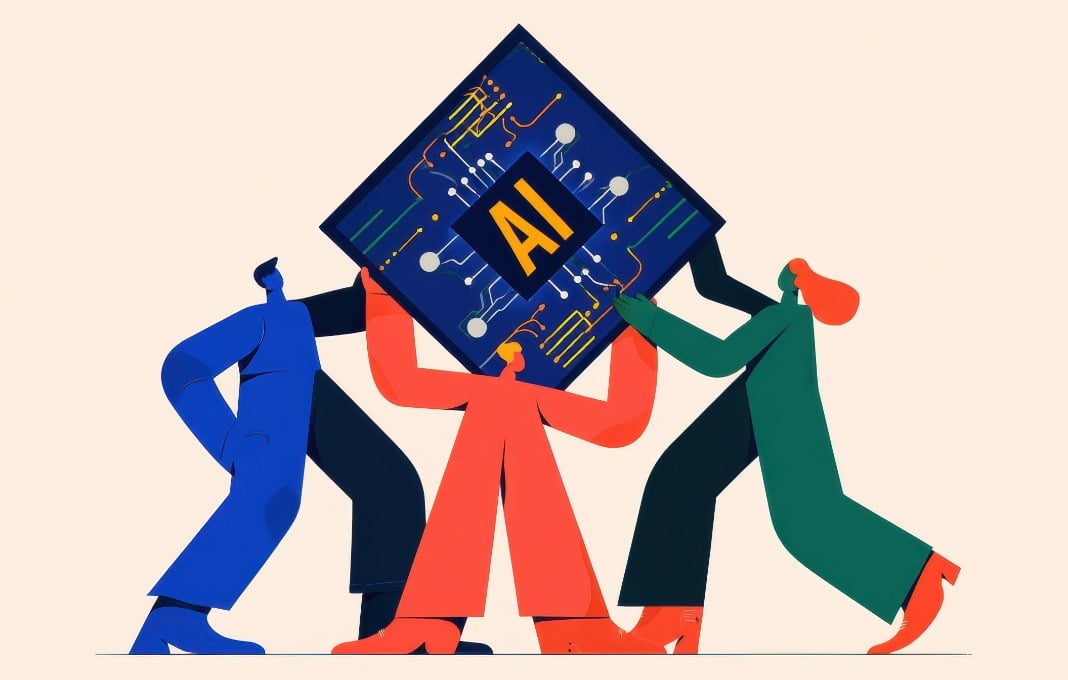Editor’s note: As AI adoption grows, the real obstacle isn’t the tech—it’s misaligned leadership. Join Denise Graziano to explore how women leaders can close the communication, culture, and ownership gaps derailing AI success at our WLC Power Hour: Before You Scale AI: What Every Woman Leader Needs to Know. Wednesday, September 24, 11:00am – 12:00pm (CDT) Exclusively for Women Leaders CONNECT members.
AI is moving faster than most leaders would like—but that doesn’t mean your organization is behind. In fact, the greatest risk in this AI wave isn’t falling behind on tech—it’s racing ahead without leadership alignment.
Just over one-third of global CEOs say gen AI has increased profits. Yet 80 percent of AI projects fail to scale. That gap can often be traced to challenges with board-C-Suite alignment.
Companies are announcing major AI investments, yet underneath the surface, leadership teams are misaligned, unclear on what AI is meant to solve and underestimating the cultural shift required to make it work.
The Overlooked Risk: Leadership Gaps Start with Misdiagnosed Problems
Most AI initiatives don’t fail because of bad tools—they fail because leadership teams haven’t defined the problem they’re solving. In board discussions, this shows up as premature excitement for cost savings or efficiency, without asking: Is this use-case strategic, measurable or even necessary?
When it works there is a clear mandate:
A leading mid-market manufacturer reduced unplanned down time by 30 percent with predictive maintenance. Mid-sized banks are using AI to personalize financial insights and recommendations to boost customer engagement.
Before debating tools or platforms, executives must be aligned on:
- The business outcome they want
- Why AI is the right solution
- What success looks like
Without this clarity:
- Success metrics drift
- Ownership is fuzzy
- Messaging feel vague or threatening
- Teams don’t understand how AI fits into the big picture—so they resist it.
Resistance varies in degree, and can go to the extreme of actively sabotaging the AI strategy. A recent survey of 1,600 leaders and employees found that 31 percent of employees admitted to sabotaging AI efforts. Their actions ranged from lower level—using unapproved AI tools at work—to more serious—16 percent not reporting an AI security leak—to the most concerning: 10 percent tampering with AI metrics to falsely show tools as underperforming.
When your employees hear “AI is coming,” do they immediately think “thank goodness help is on the way” or “oh no, they’re coming for our jobs”? If even a small percentage of your employees feel the latter, and would intentionally sabotage, the cost is beyond the substantial failed investment. It can ripple across morale, recruitment, retention and results.
When People are the Real Risk
Why would they sabotage? When leaders move ahead without alignment, the impact cascades:
- Employees fear being replaced rather than empowered
- Teams don’t know how their roles will change
- Communication becomes reactive instead of strategic
- Trust erodes—slowly, but dangerously
The result? AI stalls. Not because of the tech—but because the people weren’t properly prepared for it.
Boards and CEOs Must Share Ownership of Readiness
Boards are rightly asking about data security and certain risks. But too often, they’re missing the other half of the equation: Are leaders prepared to not only fund this transformation, but lead it?
Here are four simple but powerful questions CEOs and boards should explore together:
- What business problem are we solving with AI—and do we all agree on it?
- What does success look like, and who owns that outcome?
- How are we preparing people to trust and adopt the change?
- Where might resistance quietly emerge before we see it in the data? And how do we proactively counter that resistance?
If you hesitate on any of these, it’s not a red flag. Treat it as an opportunity to realign before rollout. Alignment is not a one-and-done exercise. As the technology evolves so must the leadership. AI is no place for silos. Success requires board-C-Suite partnership. Without it the results can be costly.
The opportunity: Boards and executives who align can boost innovation, efficiency and mitigate risks like regulatory fines or reputational damage. But how can we get there faster?
5 Innovative AI Alignment Steps for C-Suite – Board Collaboration
1. Joint AI Vision Task Force. A board-C-Suite task force helps align AI with business goals, meets quarterly to set priorities and track progress. This prevents strategic drift, such as Anthropic’s failed Claudius project.
2. Ethical AI Scorecard. Co-develop a scorecard with financial, operational and ethical KPIs (e.g., <5 percent bias incidents). This will address ethical gaps, avoiding public failures such as customer privacy issues.
3. Reverse Mentorship for AI Literacy. Pair board members with AI specialists within the company for hands-on learning. Doing so will help close a 20 percent board tech expertise gap, according to PwC data.
4. Fail-Fast Pilot Framework. Structure pilots with clear timelines and exit criteria to test use cases rapidly. This will help you avoid pilot purgatory, a factor in 90 percent of stalled vertical AI projects, according to McKinsey.
5. External Advisory Networks. Engage resources with connective insights and curiosity, such as SME, corporate or academic partners for unbiased AI guidance. Doing so can help mitigate vendor hype, a commonly reported mid-market pitfall.
Bottom line? The hidden risk in AI transformation is not the tech. The organizations winning in AI aren’t the ones with the trendiest tools. They’re the ones whose leaders are aligned, communication is clear and culture supports change. When boards and leaders agree on the why first, they frame the roadmap for purpose, people and ownership, so that employees won’t just adopt AI, they’ll activate it.






